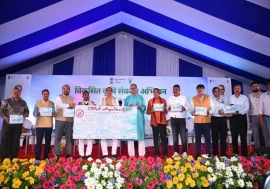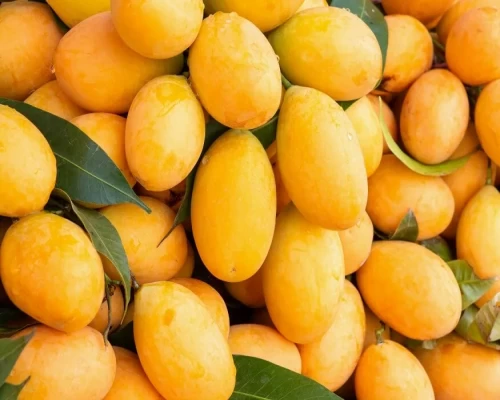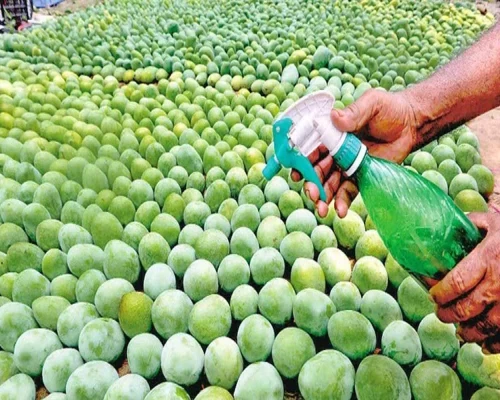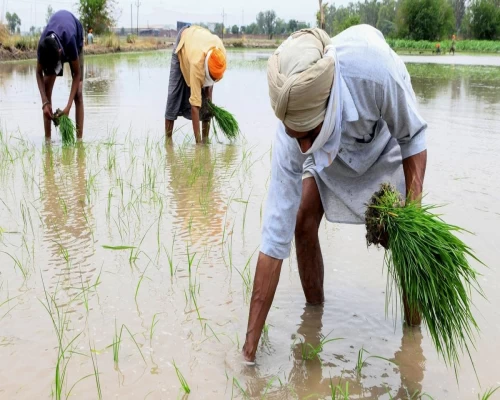
New Delhi: On the eve of Independence Day 2024, Union Minister for Environment, Forest and Climate Change Bhupender Yadav announced the addition of three new Ramsar sites in India, bringing the total to 85. The newly designated sites are Nanjarayan Bird Sanctuary and Kazhuveli Bird Sanctuary in Tamil Nadu, and Tawa Reservoir in Madhya Pradesh. With this addition, the total area of Ramsar sites in India has increased to 1,358,068 hectares.
In a statement on X, Yadav expressed his pleasure at the inclusion of these new Ramsar sites, which aligns with Prime Minister Narendra Modi's vision of harmonising with nature. Modi has termed wetlands as Amrit Dharohars, reflecting their importance in environmental conservation. Yadav praised Tamil Nadu and Madhya Pradesh for their efforts and urged the nation to commit to making a Green Bharat a reality as part of the broader Viksit Bharat initiative.
New Ramsar Sites
Nanjarayan Bird Sanctuary
Located in the north-eastern region of Uthukuli Taluk in Tiruppur District, Tamil Nadu, the Nanjarayan Bird Sanctuary covers 125.865 hectares. This large shallow wetland, situated about 10 km north of Tiruppur city on the Tiruppur-Uthukkuli main road, has its origins from restoration efforts by King Nanjarayan. The lake falls under the administrative jurisdiction of Sarkar Periyapalayam and Neruperichal villages.
The Nanjarayan Lake supports a rich biodiversity with approximately 191 bird species, 87 butterfly species, 7 amphibian species, 21 reptile species, 11 small mammal species, and 77 plant species recorded in and around it. The lake serves as a critical feeding and nesting ground for both resident and migratory birds. Additionally, it plays a vital role in groundwater recharge and is a significant water source for local agriculture. The local community, alongside the forest department, actively manages and conserves the lake.
Kazhuveli Bird Sanctuary
Spanning 5,151.6 hectares, the Kazhuveli Bird Sanctuary is located in Villupuram District, Tamil Nadu, along the Coromandel Coast, north of Pondicherry. Declared as a bird sanctuary in 2021, it is a brackish shallow lake connected to the Bay of Bengal through the Uppukalli creek and the Edayanthittu Estuary.
Kazhuveli is a key stopover site for migratory birds along the Central Asian Flyway and serves as a breeding ground for resident bird species and fish. The sanctuary features diverse water conditions including estuarine, brackish, and freshwater areas. Historically, the region was home to Tropical Dry Evergreen Forests and now supports degraded mangrove patches and reed beds.
Tawa Reservoir
The Tawa Reservoir, located near Itarsi town in Madhya Pradesh, is formed by the confluence of the Tawa and Denwa rivers. Covering an area of 20,050 hectares, it is one of the largest reservoirs in the state. The reservoir, constructed primarily for irrigation, also supports power generation and aquaculture.
The Tawa Reservoir has a total catchment area of 598,290 hectares and falls within the Satpura Tiger Reserve, marking its ecological significance. It serves as a habitat for various aquatic flora and fauna, including rare and endangered plant, reptile, and insect species. The reservoir is vital for local and migratory birds and contributes significantly to the region’s biodiversity. It also plays a crucial role in maintaining ecological balance due to its location on the western boundary of the Satpura National Park and Bori Wildlife Sanctuary.
India became a signatory to the Ramsar Convention on 1 February 1982. Since then, the country has significantly expanded its network of Ramsar sites, with 59 sites added between 2014 and 2024. Tamil Nadu now boasts the highest number of Ramsar sites at 18, followed by Uttar Pradesh with 10. This expansion reflects India’s ongoing commitment to wetlands conservation and the preservation of vital ecosystems. /BI









 (13)_500_x_400.webp)


